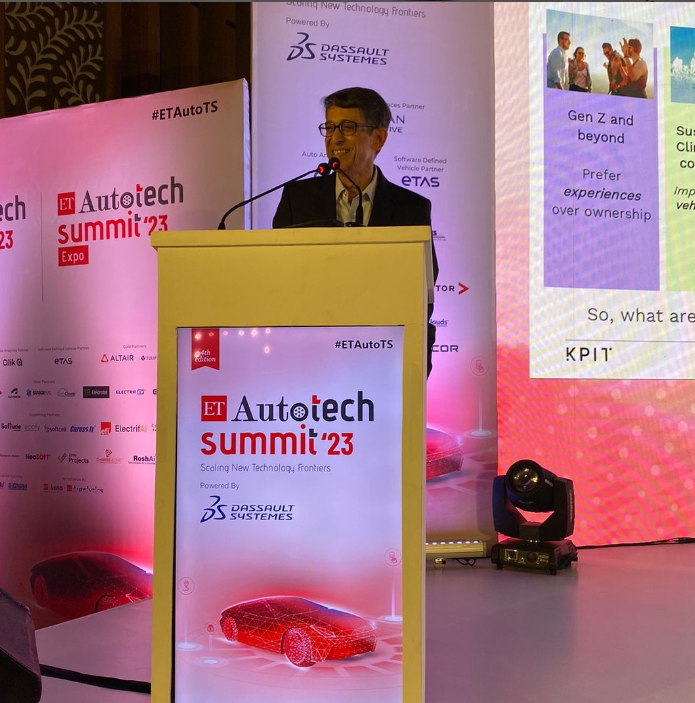
New Delhi: Mobility is becoming very relevant because of its immense contribution to GDP growth rate and as a harbinger of human development. The mobility industry has played a vital role in the advancement of humanity, according to Ravi Pandit, co-founder and Chairman, KPIT Technologies.
Addressing the 4th edition of ETAuto Tech Summit, Pandit said, “I recognize the significance of the mobility industry, not only in terms of its GDP contribution but also as a symbol of human progress. Mobility has played a vital role in the advancement of humanity, from our ancestors venturing out of Africa to our exploration of space. Therefore, I believe mobility is synonymous with human progress, and we have a crucial role to play in this field.”
“The field of mobility is currently undergoing a profound transformation, unlike anything else we have witnessed in the past century since Henry Ford introduced the Model T, today we are on the cusp of another paradigm shift,” he said
About the global scenario, he said that nearly 50% of light vehicle sales by volume in the past year came from developed economies, such as the US, Europe, Japan, and Korea. While China shows remarkable growth, it is somewhat geopolitically isolated. Therefore, to understand the trends that will impact the Indian market, it is essential to analyze the developed markets.
“The stagnancy in auto sales in developed markets can be attributed to various factors. Firstly, the younger generation, often referred to as Gen Z and beyond, prioritizes experience over ownership. This trend is evident across various industries, including hospitality like, Airbnb, and transportation like Uber. Consequently, there is a decline in car ownership and a shift towards car subscription models,” he said.
“Secondly, sustainability and climate consciousness are major concerns globally. Many studies have shown that younger generations are willing to pay a premium for environmentally-friendly solutions. This trend has fuelled the growth of electric vehicles, which presents a stark contrast to the flatness in overall auto sales.”
The demographic changes, such as declining population growth and increased urbanization, also impact vehicle ownership. For instance, in developed markets like Germany, population growth is minimal, and urban space is limited. These factors, combined with promising new technologies like spatial computing and the multiverse concept, create new challenges and opportunities for the auto industry, he said.
In response to these evolving trends, the global auto industry is redefining its relationship with customers. “Auto manufacturers aim to establish lifelong relationships with customers rather than treating vehicle sales as one-time transactions. They seek to provide immersive digital user experiences within vehicles, transforming cars into personalized spaces equipped with advanced technologies for health monitoring and personalized entertainment.” he added.
He stated that auto manufacturers are exploring multiple sources of monetization, improving business efficiency, and establishing partnerships with cloud and telecom companies. These strategic shifts have significant implications for both hardware and software.
About the hardware domain, he said that there is a trend towards consolidation to reduce costs and enhance control. This involves transitioning from distributed hardware to domain controllers and centralized computers. Auto OEMs are also decoupling hardware and software to balance their incomes with industry partners. Additionally, there is an increased focus on electric powertrains and lightweight materials to improve efficiency and meet emission standards.
He said, “On the software side, the automotive industry is embracing a software-defined architecture. This shift allows for over-the-air updates, enabling continuous improvement and new feature deployment throughout the vehicle’s lifespan. Software-defined vehicles also facilitate advanced driver assistance systems (ADAS) and autonomous driving capabilities.”
In the context of autonomous vehicles, he talked about different levels of automation, ranging from Level 1 (driver assistance) to Level 5 (fully autonomous). While fully autonomous vehicles are still in the development stage, there is rapid progress being made in ADAS technology, including features like adaptive cruise control, lane-keeping assist, and automated parking. These technologies enhance safety and convenience and pave the way for higher levels of automation in the future.
















